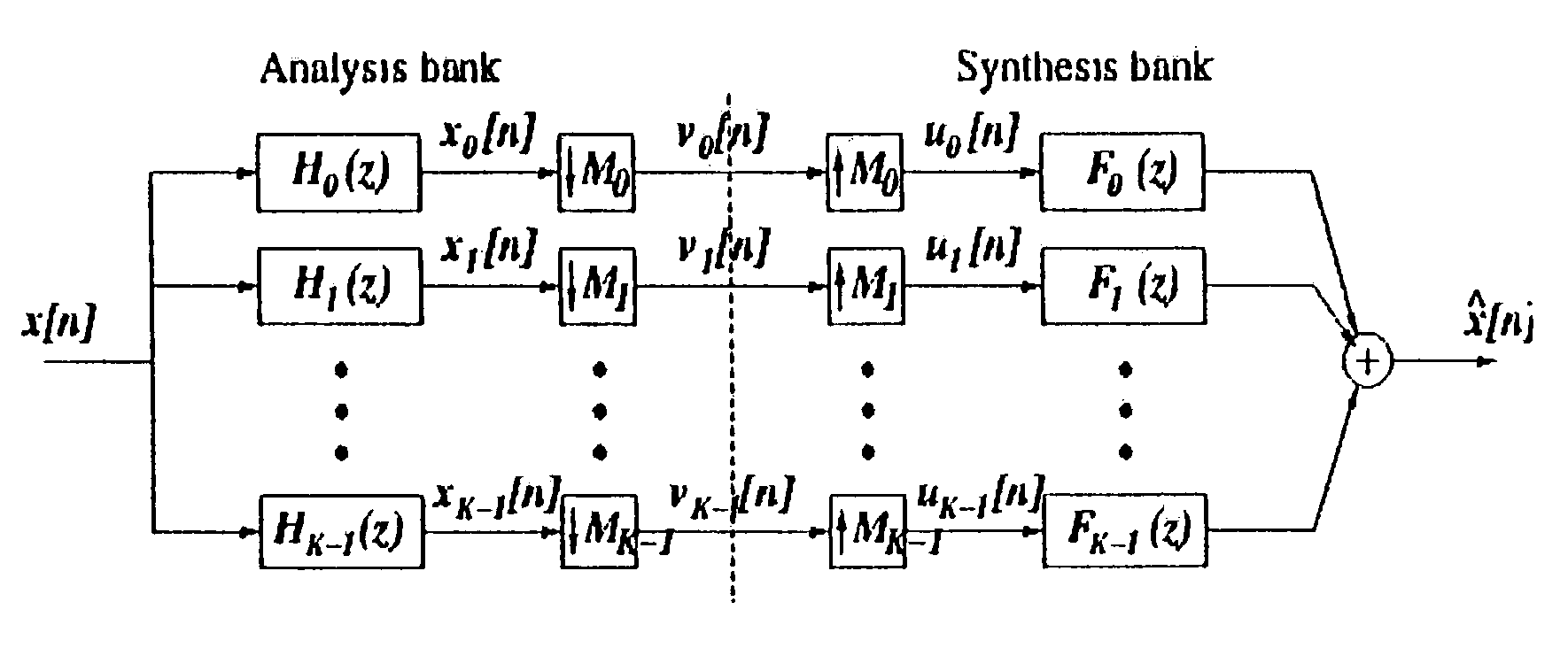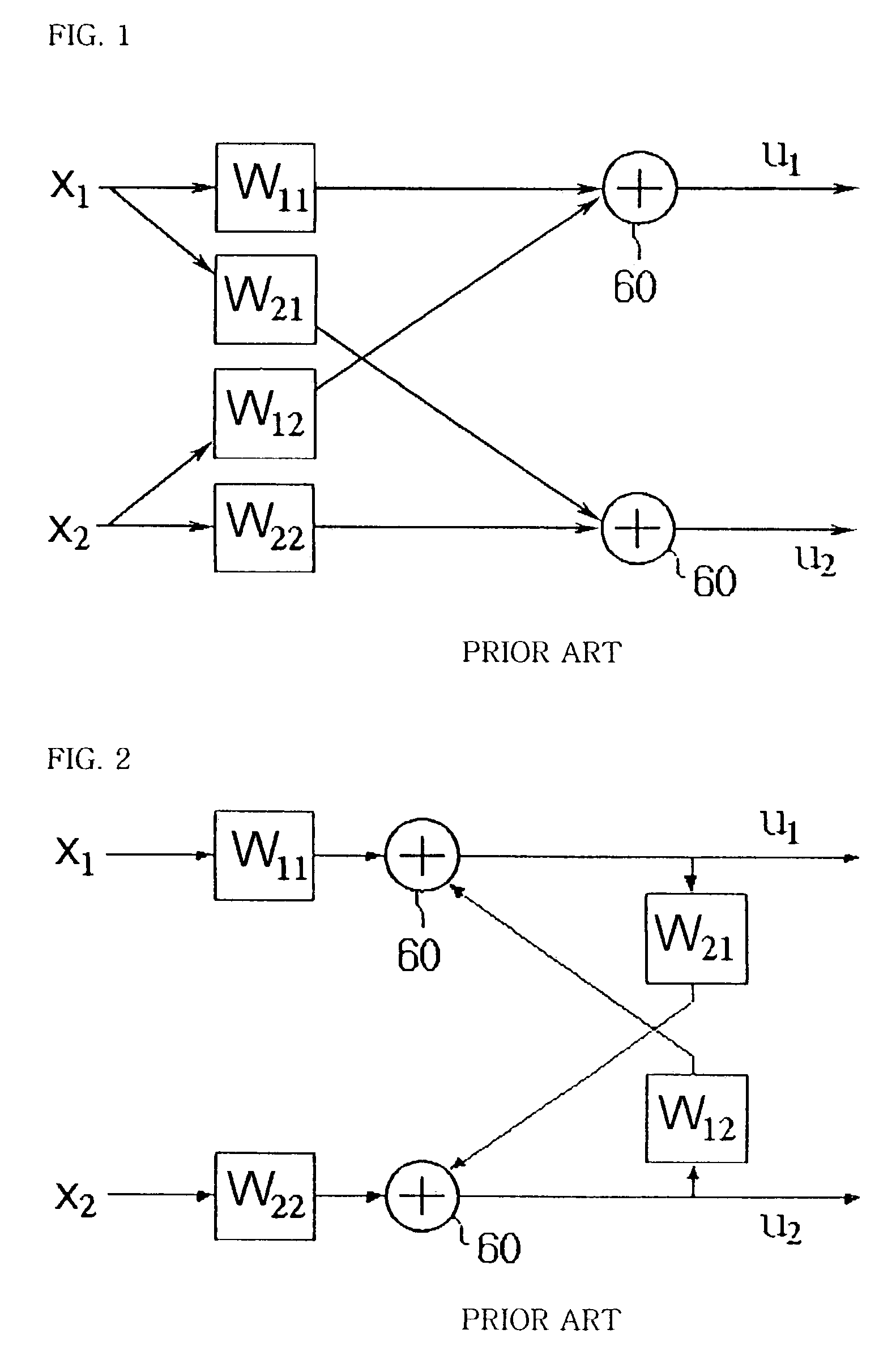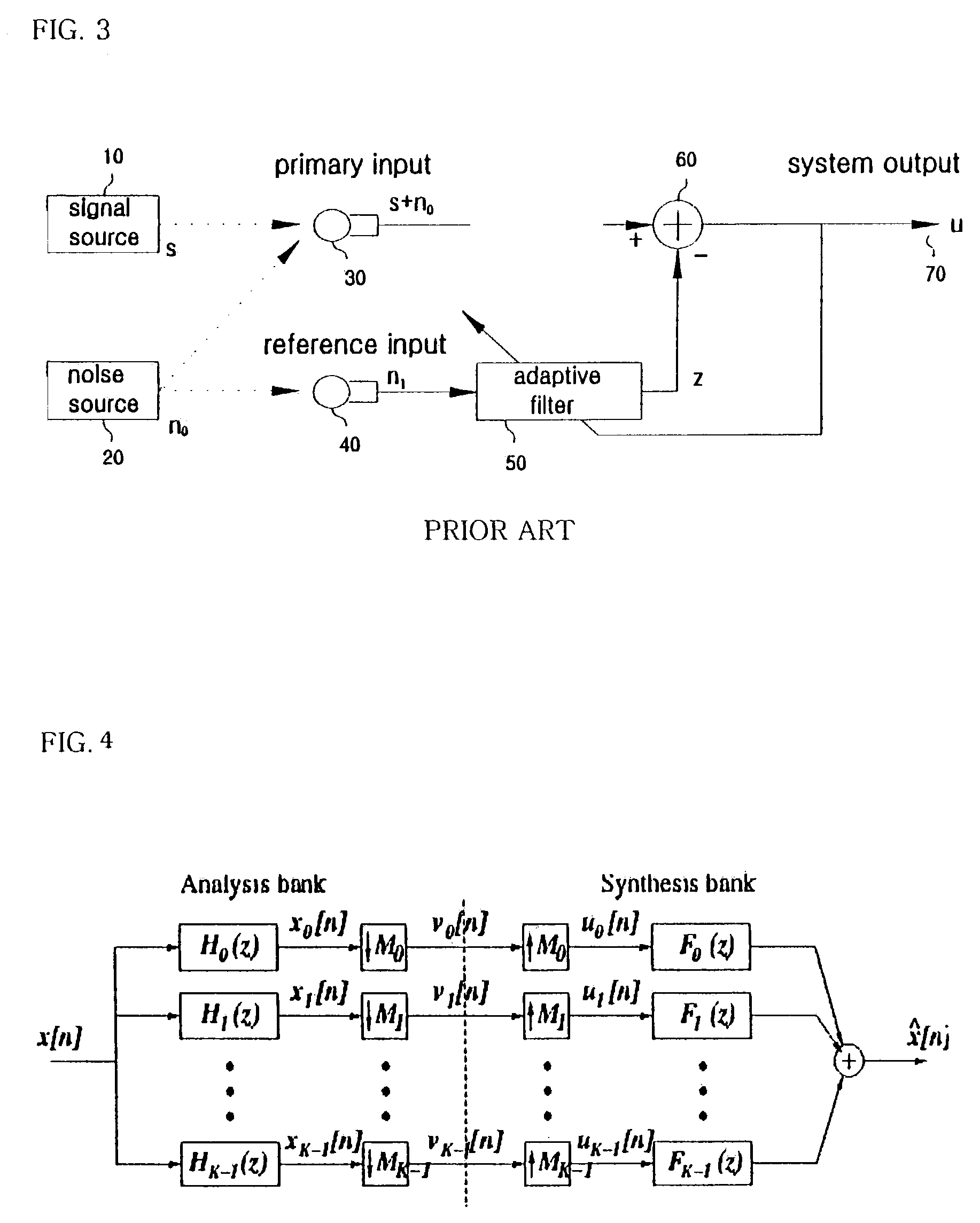Filter bank approach to adaptive filtering method using independent component analysis
a filter bank and component analysis technology, applied in the field of filter bank approach to adaptive filtering method using independent component analysis, can solve the problems of large amount of calculation, slow learning speed, and large number of filter training coefficients, so as to improve the learning speed and the quality of result signals, improve the performance of the conventional adaptive filtering method, and reduce the amount of calculation
- Summary
- Abstract
- Description
- Claims
- Application Information
AI Technical Summary
Benefits of technology
Problems solved by technology
Method used
Image
Examples
Embodiment Construction
[0062]Hereinafter, preferred embodiments of the present invention will be described in detail with reference to the accompanying drawings.
[0063]FIG. 4 shows a diagram which illustrates a multi-sampling system using the filter bank approach according to the present invention. An input signal x(n) is separated into K number of signals through K number of analysis filters Hk(Z) and takes in a sample signal at every Mk≦k time from each signal xk(n) in order to form a signal vk(n). In this instance, the signal vk(n) could be represented in a Z domain.
[0064]Vk(z)=1Mk∑m=0Mk-1Xk(zWMkm)=1Mk∑m=0M-1Hk(zWMk)X(zWMk)[MathematicalEquation11]
[0065]where WMi=e−j2zmk. From this signal, uk(n) is formed by inserting Mk−1 number of samples whose value are zero between every two consecutive samples and this could be represented in a Z domain.
[0066]Uk(z)=Vk(zMl)=1Mk∑m=0M-1Hk(zWMlm)X(zWMlm)[MathematicalEquation12]
[0067]A signal which is nearest to the original signal {circ...
PUM
 Login to View More
Login to View More Abstract
Description
Claims
Application Information
 Login to View More
Login to View More - R&D
- Intellectual Property
- Life Sciences
- Materials
- Tech Scout
- Unparalleled Data Quality
- Higher Quality Content
- 60% Fewer Hallucinations
Browse by: Latest US Patents, China's latest patents, Technical Efficacy Thesaurus, Application Domain, Technology Topic, Popular Technical Reports.
© 2025 PatSnap. All rights reserved.Legal|Privacy policy|Modern Slavery Act Transparency Statement|Sitemap|About US| Contact US: help@patsnap.com



